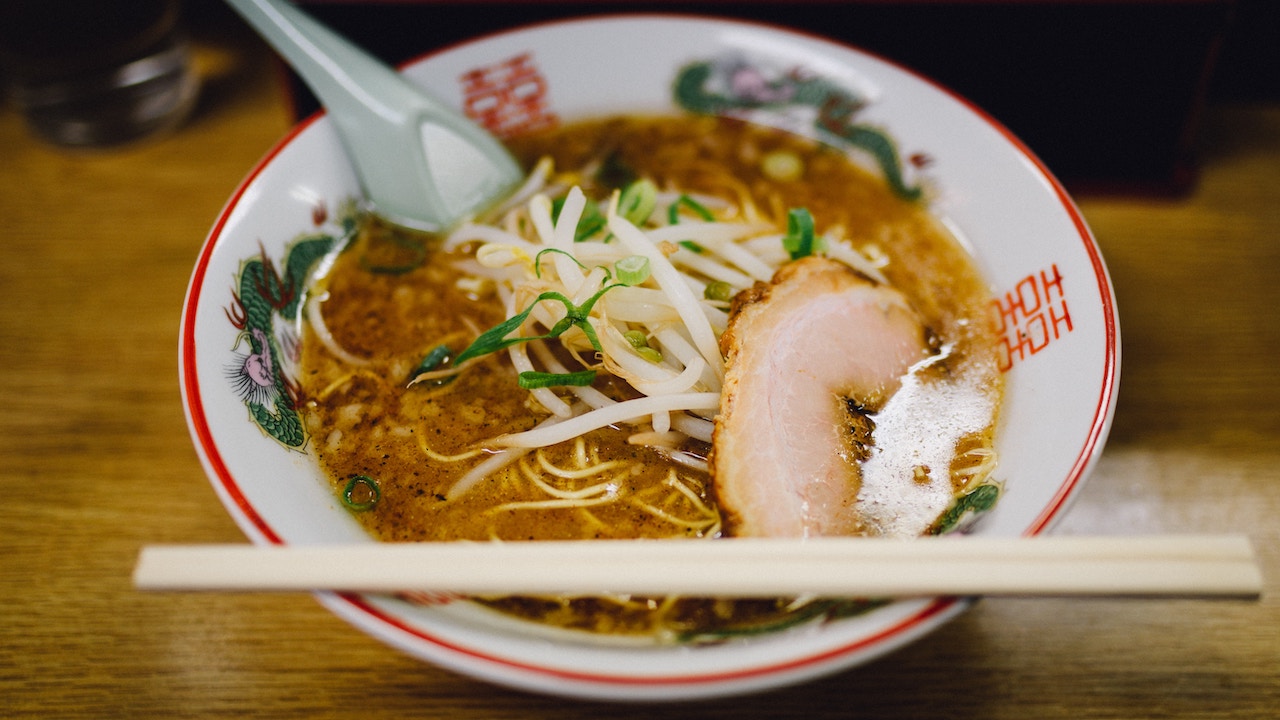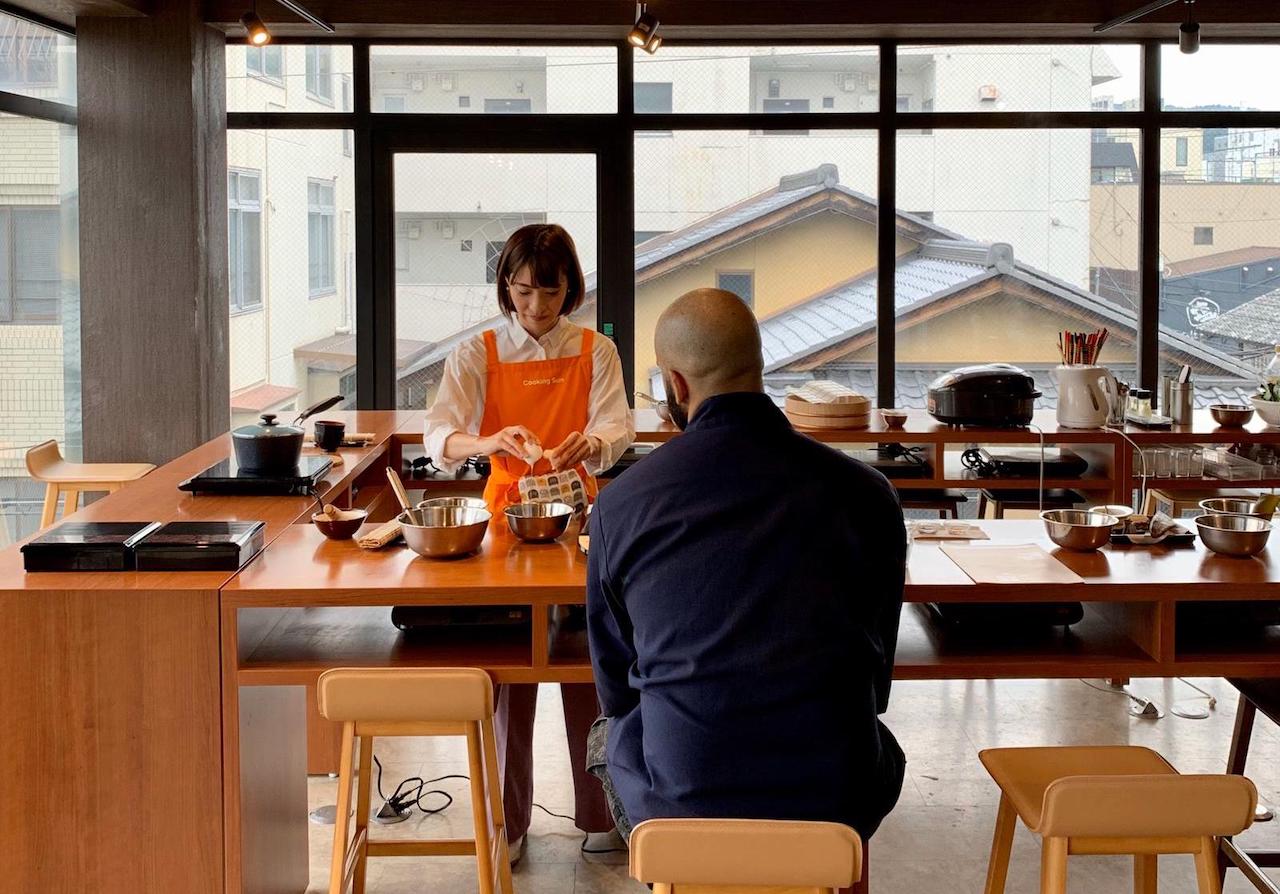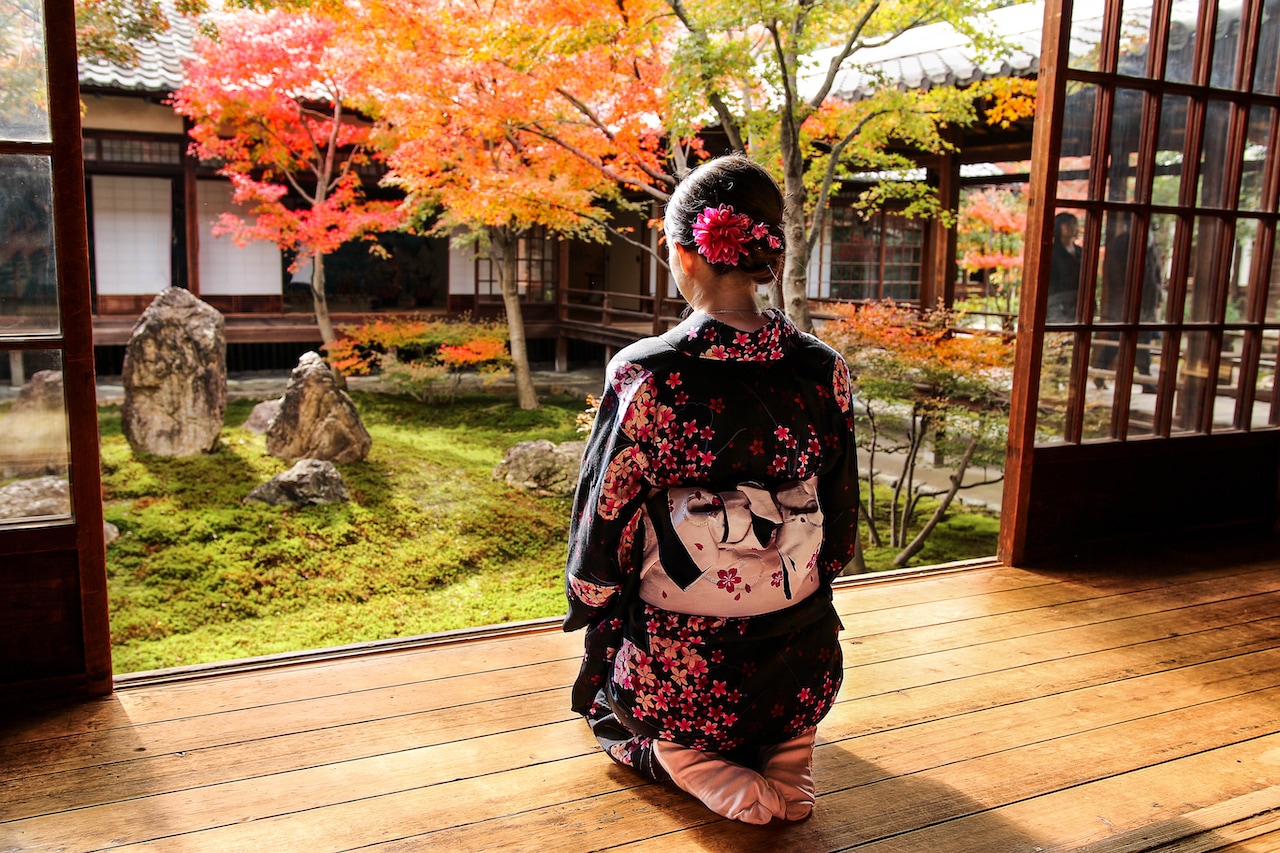As host of the 2020 Summer Olympics, Japan is one of the most eyed destinations this year. Even at Out Adventures, we’re gearing up for our gay Japan: Kyoto to Tokyo tour. To help our travellers avoid ruffling feathers, we break down Japanese customs, etiquette and table manners.
How to Bow in Japan
What to know
Similar to most Asian countries, it is Japanese custom to bow to one another. A bow can range from a nod to a deep bend at the waist. It can also take place while kneeling on a ‘tatami’ (traditional floor mat) during traditional activities like tea ceremonies. A Japanese bow is used as a greeting, thank you, apology or even to initiate a request.
What to do
Different forms of bows signal different intentions and levels of severity. You may use a small nod of the head as a greeting, thank you or acknowledgement of a simple mistake. Meanwhile a deeper bow at the waist indicates sincere respect. While bowing is customary among locals, don’t overthink it: foreigners are not expected to know proper bowing etiquette. Most foreigners combine a bow and handshake when meeting a local.
What to avoid
Unlike many Asian countries, the Japanese traditionally do not hold their hands in prayer while bowing.
When to Remove Your Shoes in Japan
What to know
Unlike the USA, shoes are often removed before entering many common spaces including houses, restaurants, hotels and hot springs.
What to do
Remove your outdoor shoes before entering most indoor common spaces. There will always be a place to leave your shoes. In most places indoor slippers will be provided.
What not to do
Obviously, do not wear your outdoor shoes indoors. Slippers are the appropriate indoor footwear. Keep in mind, many Japanese homes and hotels will provide a different pair of slippers to wear in bathrooms/washrooms. Switch slippers before entering these rooms and again when leaving.
Proper Chopstick Etiquette

What to know
While most hotels and larger restaurants in Japan will have forks and knives available for foreigners, smaller izakayas, snack bars and restaurants may only offer chopsticks and spoons. If you are using chopsticks, there are quite a few Dos and Don’ts.
What to do
First things first: Be sure to practice wielding a pair of chopsticks before touching down in Japan – the more you practice, the easier it’ll be to dine like a local when you arrive.
Regarding chopstick etiquette, when you’re not using chopsticks, place the them back in their holder so they don’t touch the table. Second, don’t be afraid to hold a bowl of rice or noodles closer to your mouth when using chopsticks. Finally, remember chopsticks aren’t toys – we assure you, mimicking a walrus will not garner the laughs you’re hoping for.
What to avoid
The most important thing to keep in mind is to never pass food directly from your chopsticks to another’s or vice versa – this is a big no-no. Instead, use your chopsticks to place food on your dinner companion’s plate. The reason this is a big deal is because passing food between chopsticks reminds locals of a Japanese custom at funerals in which bones of the deceased are passed from person to person with large chopsticks.
Second, when eating family style, use your chopsticks to take food from the serving dish and put it on your plate before eating. It is not Japanese custom to eat an item directly off the shared serving dish.
Finally, no matter how animated the dinner discussion may get, it is always considered rude to point at someone with your chopsticks. In fact, pointing in general is quite rude (more on this later).
Japanese Table Manners

What to know
While chopsticks may take the longest time to get the knack of, there are plenty of other tid-bits to keep in mind around the Japanese dinner table.
What to do
Before a meal, it is Japanese custom to say “itadaki-masu”, meaning “I humbly receive” or “let’s eat”. Not doing so is disrespectful. Similarly, it is customary to say “gochisōsama deshita” (“thank you for the feast”) after a meal. Also, when eating a bowl of noodles it is actually encouraged to make ‘some’ slurping noises – it’s often said noodles taste better when slurped!
What to avoid
While slurping noodles is customary, burping, munching and blowing your nose at the table are certainly not.
Also, it is impolite to leave food on your dinner plate. You should eat everything, down to the last grain of sticky rice.
Finally, when it comes to beverages, do not take a swig until everyone around the table has a drink. Further, when everyone does have a drink, be sure you’ve raised them in a “kampai!” (“Cheers!”).
Tipping in Japan
What to know
No matter how exceptional Japanese service is – and trust us, the Japanese always over-deliver – tipping is absolutely not required. This goes for servers, bar tenders, cab drivers, barbers and so forth. In fact, trying to force a customer service worker to take a tip will result in either confusion, or one of Japan’s signature polite but firm refusals. A simple “Arigatou” (“Thank You”) or it’s more polite brethren “Arigatou Gozaimasu”, is more than sufficient.
That said, there are two exceptions when a tip, although still not required, will be warmly accepted in Japan. First, is to Japanese tour guides & interpreters. Second, is at a ryokan (a traditional Japanese inn).
Tipping your Japanese tour guide
There’s no clear guide on what is and isn’t appropriate when tipping your local tour guide. On our gay Japan: Kyoto to Tokyo tour we’ve taken the stress out of this grey area by including the tip in the cost of your tour. At the Farewell Dinner, your Out Adventures’ host will present the collective group tip to your guide in a respectful manner.
If you are travelling to Japan by yourself and wish to tip your guide, our stance is to tip what you feel is right. Our only recommendation is to avoid whipping out a wad of cash and putting it directly in their hands – this would be considered quite crass. Put the tip into an unwrinkled envelope and present it to them with both hands. A small bow while giving the tip would also be considered polite.
Finally, gifts are a big part of Japanese culture and presenting your guide with a small gift from your home country would be a very nice gesture. It would also be considered polite to cover the cost of your guide’s tea, or to buy them a drink at a bar.
Tipping at a Ryokan
Two scenarios could garner a tip at a ryokan – once again, this is not a requirement. First, if you had a special request before you arrive. For example, it’s your anniversary and you ask for a bottle of chilled sparkling wine to be waiting in your room to surprise your partner. Second, if your stay was truly spectacular. In either case, we recommend putting your tip in an envelope and presenting it to the owner/proprietor of the ryokan with two hands and a small bow.
A Note On Japanese Titles and Names: “-san,” “-kun” and “-chan”
“-san” is a title used to show respect. It can be added to either surnames or given names as well as titles and occupations. It can be used by and for men and women.
“-kun” is a title used to address someone younger or in a more junior position than the speaker. It is less polite than “-san”. It can be added to either surnames or given names as well as titles and occupations. While it is generally used between men, an older man may refer to a female junior coworker with “-kun”. However, it is never used between women.
“-chan” is a title used when speaking to children, female family members or, on occasion, your romantic partner. It is only added to a given name. This particular title has a quasi-baby talk essence and would be inappropriate between most adults.
LGBT & Public Displays of Affection
What to know
Public displays of affection, gay or otherwise, are discouraged in Japan. Holding hands, kissing etc. would garner many unwanted looks and glances. That said, LGBT travellers are unlikely to witness any outright discrimination.
Regarding Japanese gay bars such as the ones found in Tokyo’s famous Shinjuku Ni-Chome neighbourhood, keep in mind that things are slightly different here. For one, bartenders tend to be more in charge of the overall customer experience and will often chat you up. They may even sit down and have a drink with you, in which case it is customary to buy their beverage for them. Also, please remember a large portion of LGBT Japanese people aren’t ‘out’ with their family, friends and/or coworkers. Please respect their privacy and avoid taking pictures or videos inside Japanese gay bars.
Miscellaneous Tips
- Do not have loud public conversations on your cell phone. Further, never talk on your cell phone on public transit or in stores.
- In most Japanese cities such as Tokyo, on escalators it is strictly stand left and pass right. The exception being Osaka.
- Splitting cheques is very common. It’s known as betsu-betsu. However, restaurants rarely split bills for you so you’ll have to do some fast math.
- Avoid pointing with your finger – it is considered somewhat aggressive. Instead, use an open palm to display a direction.
- There are many rules and Japanese customs surrounding “onsen” (“hot springs”). However, rules and customs may change from establishment to establishment. For example, some onsen don’t allow visible tattoos in the vicinity, while others do. We recommend inquiring with your local guide or hotel concierge on the rules at any onsen before visiting.
That’s all… sort of.
Japanese customs and etiquette are famously complex and often requires a local perspective to understand the nuanced Dos and Don’ts. In fact, this list is by no means comprehensive. But as visitors, we are often granted a ‘pass’ if we slip up or stumble through a particular custom. Our suggestion is to always strive to be polite and follow the destination’s customs, but not to overthink it and HAVE FUN!
Image credits from top down: Shutterstock, Unsplash.com, Robert Sharp.
Featured Posts
Out Adventures' tips to best enjoy the calming culture of Luang Prabang.Read More
The Tourism Board of Thailand's new LGBT campaign isn't just an example of sticky fingers. Here's why the country is a true LGBT ally.Read More
We at Out Adventures are ecstatic to host our first gay Camino de Santiago hike. To help potential guests such as yourself feel prepared for the journey, we’ve compiled everything you need to know before booking this unforgettable pilgrimage.Read More
Apartheid is an unfortunate, but unignorable bit of recent South African history. Learn more about apartheid and Nelson Mandela here.Read More
Learn about Angkor Archeological Park and its beautiful Lost Jungle Temples. We list the 7 Angkor temples all gay travellers should visit.Read More
Today's episode of The Gay Travel Podcast is a big Incan deal as we count down our top 10 experiences you can only have in Peru.Read More
Counting down the top ten reasons to join Out Adventures on a gay tour of Budapest & Slovenia. Read More
Seven unique experiences gay travellers can enjoy on The Azores Islands with Out Adventures.Read More
